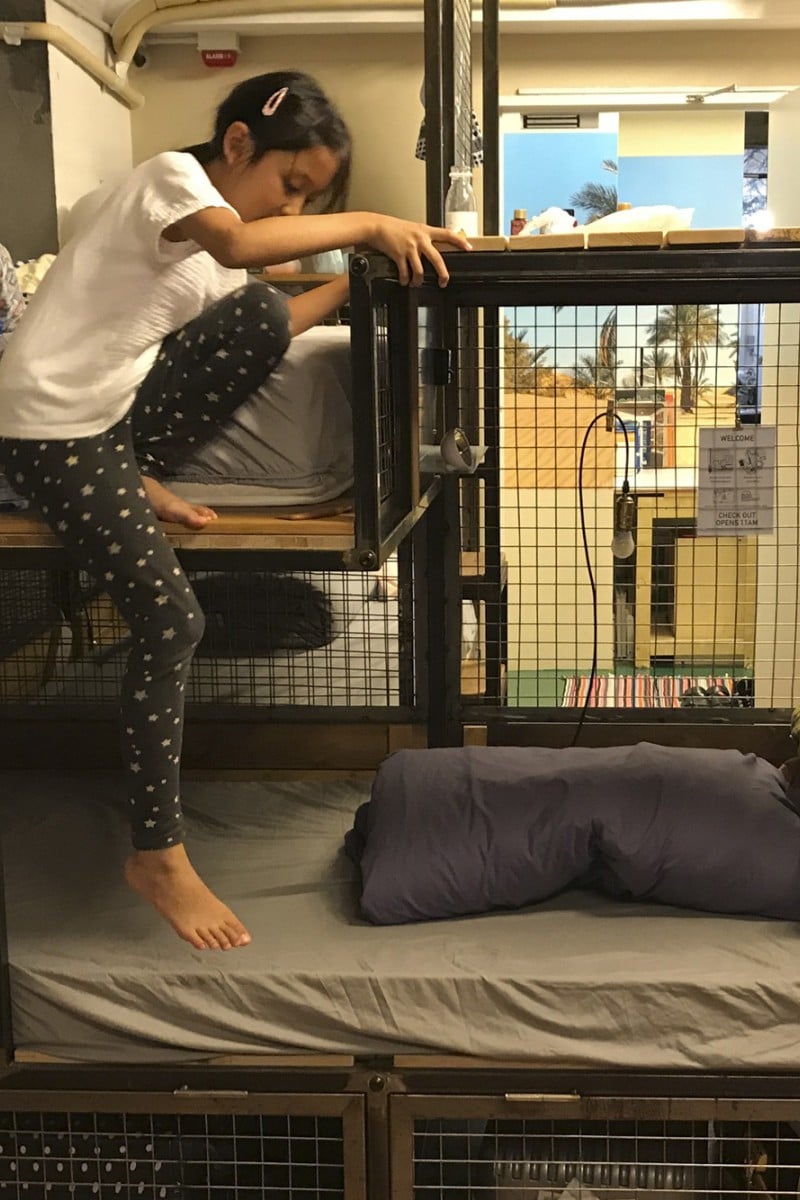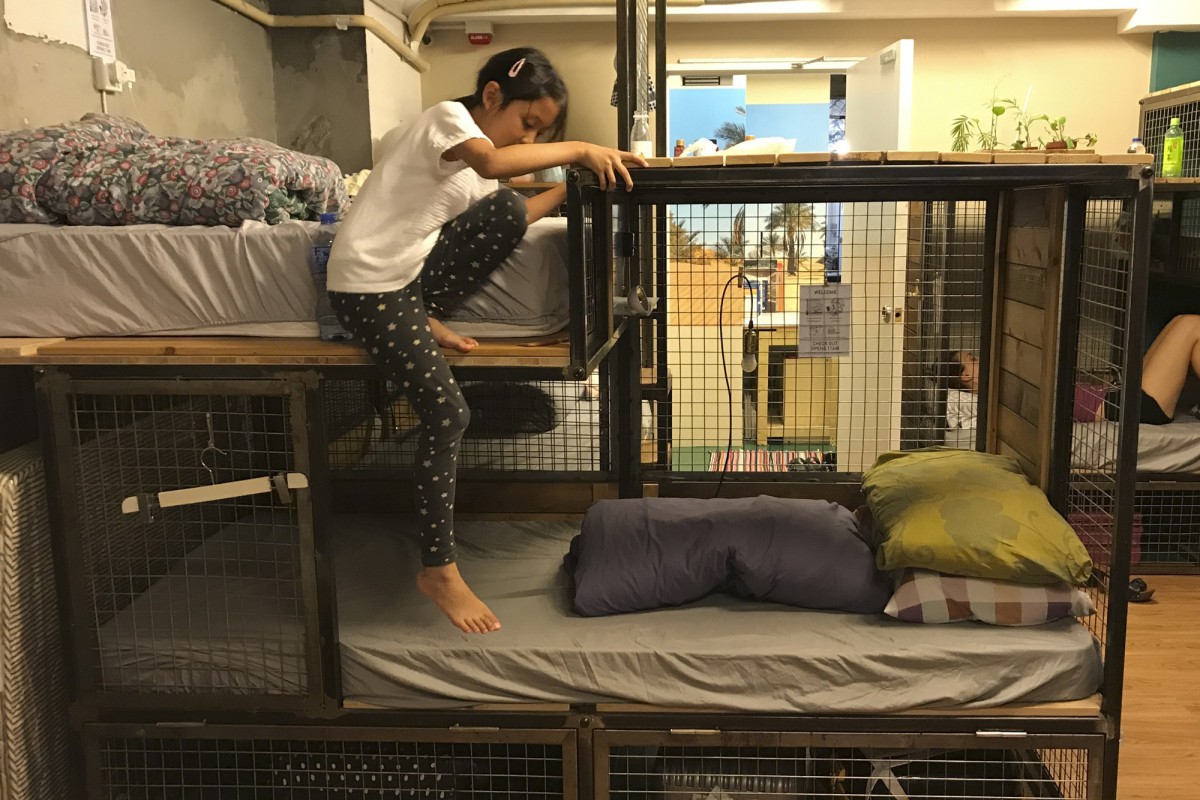
A 2016 government census has revealed that more than 200,000 Hongkongers live in subdivided flats – and 50,000 of them are student-aged
 Some 50,000 young people live in cage homes, like this one in a Sham Shui Po hostel.
Some 50,000 young people live in cage homes, like this one in a Sham Shui Po hostel. Tens of thousands of young people, aged 18 or younger, in Hong Kong live in subdivided units, cubicle homes, or cage homes. This number could be as high as 50,000.
Since 2014, the Census and Statistics Department has put together an annual report on the city’s subdivided households. The department defines these units as splitting flats for rental purposes. The 2016 report revealed that 209,700 people lived in 92,700 rooms subdivided from 27,100 flats.
Cage homes cost between HK$1,800 and HK$2,400 per month. They are, on average, two metres long and one metre wide, said Sze Lai-shan, a social worker with the Society for Community Organisation (SoCo). Cubicles can be a little bigger, and are 30 to 50 square feet and cost between HK$1,800 and HK$3,500.
“Subdivided flats, typically with a shared toilet, can be 80 to 120 square feet and costs between HK$3,000 to HK$6,500 a month to rent,” she said.
Sze added that this is a harsh reality that many Hong Kong families face.
“[Many] parents have low incomes, and depend on the CSSA [Comprehensive Social Security Assistance] scheme for help. In some cases, you might have a parent that has passed away, leaving the other to take care of the household – making it hard to find an affordable place to live,” Sze said. “The waiting list for public housing is really long, so many feel as if they don’t really have any other choice [than to live in small homes like these].”
According to the 2016 Census and Statistics Department report, 55.3 per cent of those in sub-divided units lived in Kowloon, in areas such as Yau Tsim Wong, Sham Shui Po, Yuen Long, and Kwun Tong. Further, 22.9 per cent lived in the New Territories, and 21.8 per cent lived on Hong Kong Island.